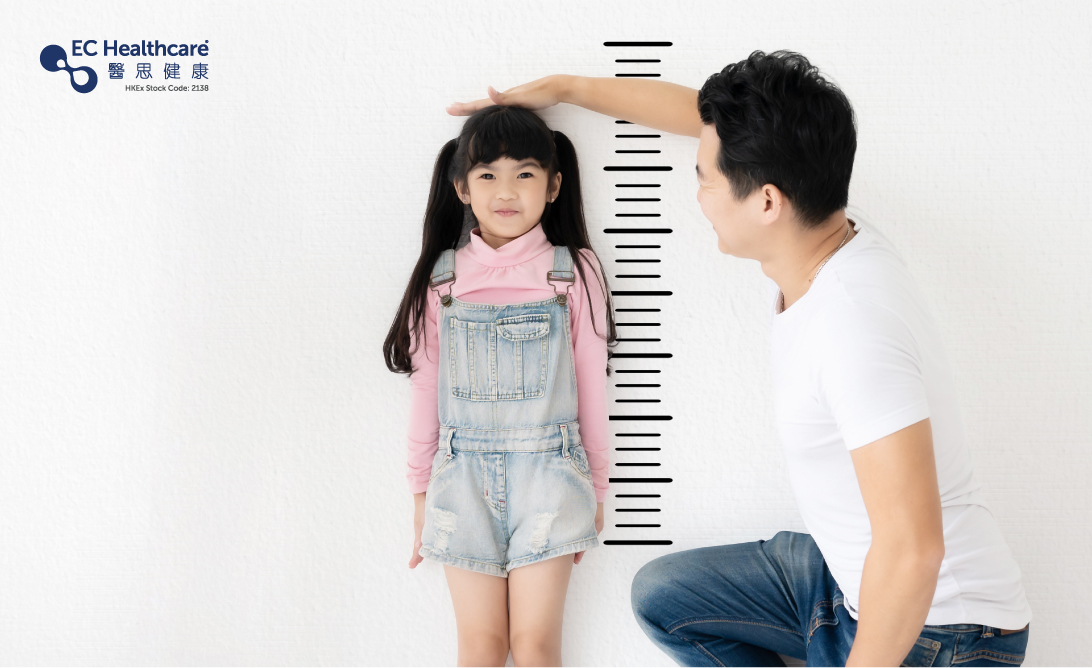Growth Hormone Deficiency: Is Your Child Not Growing Taller? Should Growth Hormone Therapy Be Considered? Unraveling the Causes, Symptoms, and Treatment Methods


Parents are often deeply concerned about their child's growth, whether it's being too short, overweight, or underweight. Just like Messi, who recently led Argentina to win the World Cup, he was diagnosed with "dwarfism" - growth hormone deficiency (GHD) - during his childhood and required nightly injections of growth hormone. To shed light on childhood growth issues, Dr. Tsui Tsz Kwan, a specialist in Pediatrics, shares the following information.
What’s GHD
The pituitary gland in the brain plays a vital role in secreting growth hormones, which are crucial for healthy development and growth in children. These hormones regulate various physiological and metabolic processes throughout different stages of life. While GHD is not a common condition, if left untreated, it can lead to stunted growth, fragile bones, and reduced physical abilities. Research data suggests that approximately one person out of every 4,000 to 10,000 individuals suffers from GHD, resulting in short stature. Children with GHD may also exhibit facial differences compared to their peers and have a higher proportion of body fat, particularly in the abdominal area. Fortunately, intellectual development remains unaffected.
Decoding the Growth Chart: A Roadmap to Assess Development
A growth chart serves as an objective tool to evaluate a child's growth and development. It represents percentile curves based on factors such as gender, age, weight, and height. Typically, a baby's growth falls within the range between the 3rd and 97th percentiles on the chart, which is considered normal. However, if a child's growth consistently deviates from their previous growth percentiles or falls outside the expected range, it's advisable to consult a pediatrician for further examination and understanding. When diagnosing a child with short stature, doctors also refer to the growth chart. If a child's height falls below the 3rd percentile, it may indicate a case of short stature.
3 Key Tests for Short Stature
When it comes to diagnosing short stature, doctors perform thorough examinations on children, taking into account their medical history and family health background. Based on each child's unique circumstances, specific tests such as blood tests, X-rays, and even brain imaging scans may be arranged. The goal is to uncover the underlying causes behind their short stature.
Keeping Track of Growth Every 4-6 Months
If parents are concerned about their child's height, it is advisable to measure their height regularly every 4-6 months. Typically, children between the ages of 4 and 10, before entering puberty, grow about 4-6 cm per year. If parents notice that their child is shorter than their peers or experiencing slower growth, it is recommended to consult a pediatrician for early examination.
Causes of Short Stature
The causes of short stature, also known as dwarfism, can vary. Some infants are born small and fall under the category of Small for Gestational Age (SGA), indicating a birth weight below 10% of the average weight for their gestational age. This is one contributing factor to short stature. There are several other reasons for short stature, which can be classified as non-pathological or pathological. Non-pathological factors include genetic influences, delayed personal maturation, delayed growth, and idiopathic short stature of unknown cause. Pathological factors include low birth weight, malnutrition, chronic illnesses such as chronic kidney disease, genetic or chromosomal variations, and endocrine disorders such as hypothyroidism or GHD.
Treating Short Stature
The treatment of short stature depends on its underlying cause. For instance, if it is due to malnutrition or poor lifestyle habits, a balanced diet, adequate rest, and exercise should be emphasized, along with potential adjustments to medication. If the cause is an endocrine imbalance, such as hypothyroidism, restoring thyroid function can lead to a return to normal growth. In cases where GHD is identified, receiving growth hormone therapy often yields noticeable results in terms of height gain.
What’s Growth Hormone
Growth hormone is a naturally occurring hormone produced by the anterior pituitary gland in the brain. It is transported through the bloodstream to the liver and major organs of the body, particularly bone and muscle cells, where it stimulates growth. Additionally, growth hormone plays a role in regulating the metabolism of sugars and fats.
Side Effects of Growth Hormone Synthetic growth hormone, used for the treatment of short stature, has been in use for over 30 years, and its efficacy and side effects have been extensively studied. While only a small percentage of children may experience adverse effects, such as headaches, joint pain, swelling, or elevated blood sugar levels. Some may also experience symptoms of benign intracranial hypertension, leading to headaches and vomiting. These side effects generally resolve upon discontinuing the treatment. However, there are extremely rare but serious conditions, such as slipped capital femoral epiphysis, which may require surgical intervention. Overall, the use of growth hormone injections for the treatment of short stature is generally considered safe. Currently, the U.S. Food and Drug Administration (FDA) has approved the use of growth hormone for the treatment of growth hormone deficiency, Turner syndrome, Prader-Willi syndrome, short stature caused by SHOX gene deletion, chronic kidney failure-associated short stature in children, idiopathic short stature, and short stature in children born small for gestational age. However, before using these medications, a thorough evaluation by a doctor is necessary to determine suitability for treatment.
Synthetic growth hormone, used for the treatment of short stature, has been in use for over 30 years, and its efficacy and side effects have been extensively studied. While only a small percentage of children may experience adverse effects, such as headaches, joint pain, swelling, or elevated blood sugar levels. Some may also experience symptoms of benign intracranial hypertension, leading to headaches and vomiting. These side effects generally resolve upon discontinuing the treatment. However, there are extremely rare but serious conditions, such as slipped capital femoral epiphysis, which may require surgical intervention. Overall, the use of growth hormone injections for the treatment of short stature is generally considered safe. Currently, the U.S. Food and Drug Administration (FDA) has approved the use of growth hormone for the treatment of growth hormone deficiency, Turner syndrome, Prader-Willi syndrome, short stature caused by SHOX gene deletion, chronic kidney failure-associated short stature in children, idiopathic short stature, and short stature in children born small for gestational age. However, before using these medications, a thorough evaluation by a doctor is necessary to determine suitability for treatment.
Optimal Results with Growth Hormone Treatment Before Puberty
The cost of growth hormone treatment varies depending on the required dosage for each child. In appropriately selected children with short stature, the use of growth hormone yields the best results when initiated before puberty. Starting treatment early leads to better outcomes. As for the duration of treatment, doctors typically advise discontinuing the use of growth hormone after the completion of puberty when the growth plates close.
Doubts Surrounding Height-Boosting Supplements
While growth hormone injections may have the potential to help children increase their height, it is crucial to ensure that children also have a balanced diet, engage in appropriate physical activity, and get sufficient rest. There are various height-enhancing methods circulating in the market, such as height-boosting formula milk, height-gain pills, and even height-increasing surgeries. The former lacks sufficient scientific evidence and proven effectiveness, while the latter carries various surgical risks and potential complications.










